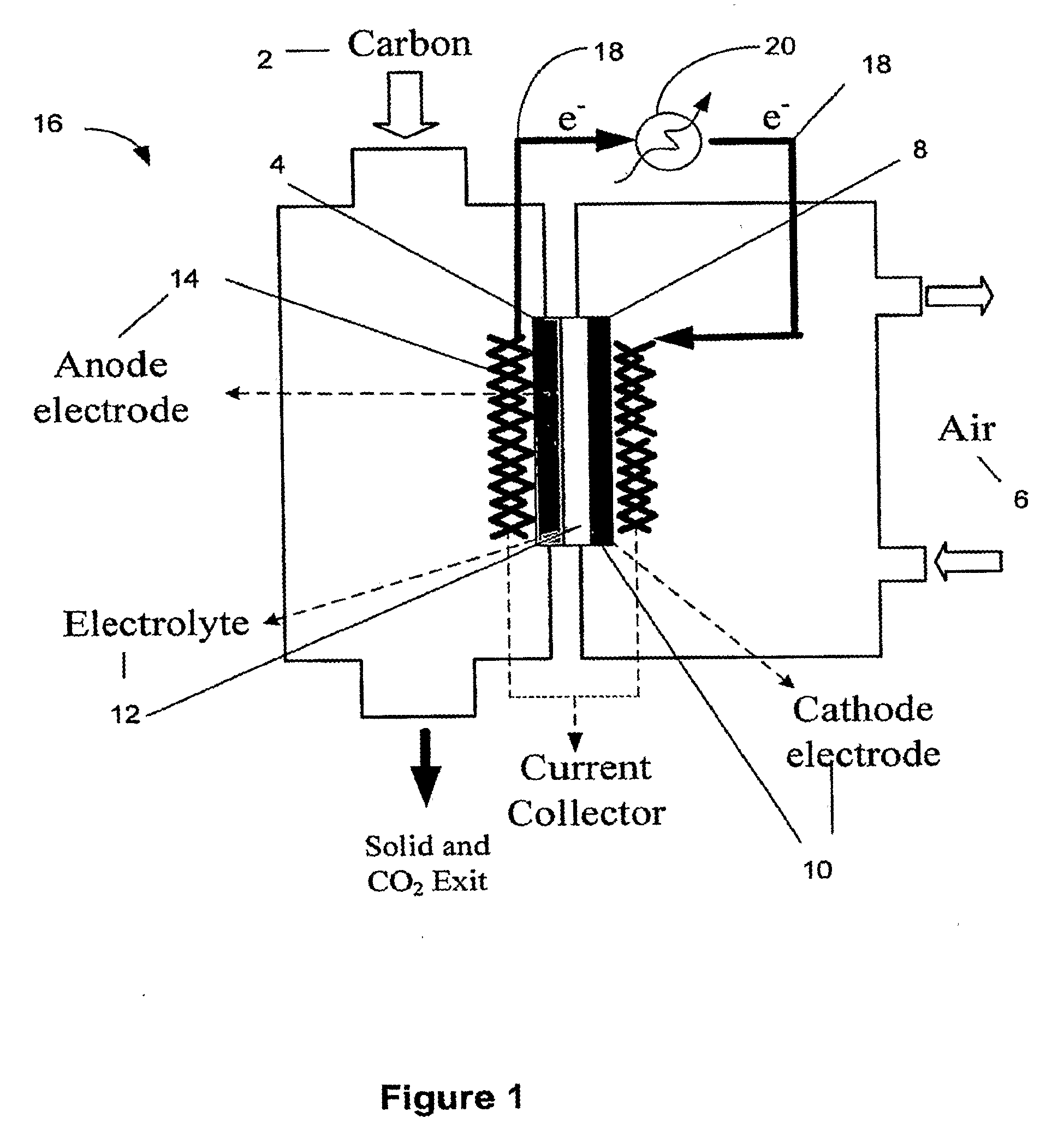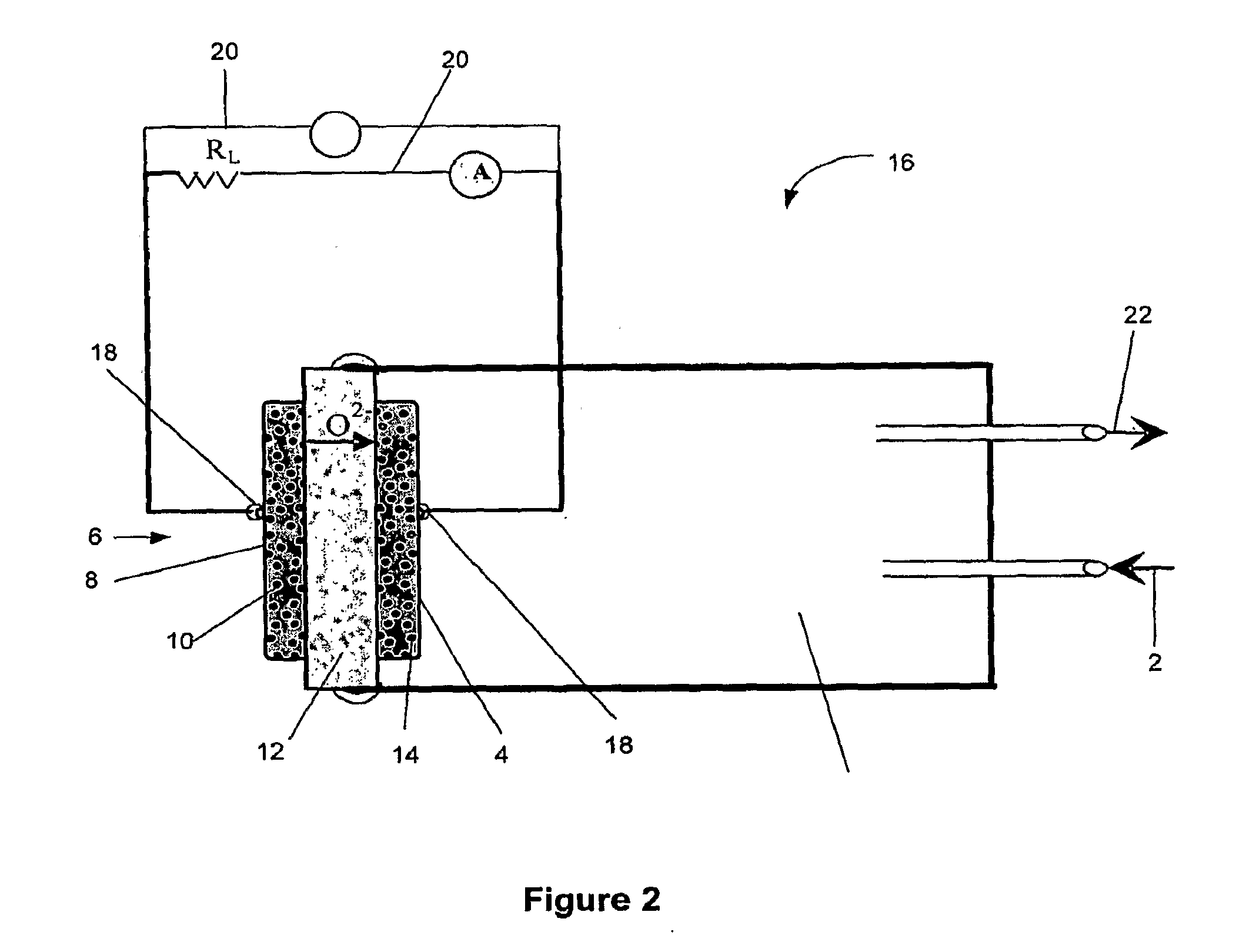Catalysts compositions for use in fuel cells
a catalyst composition and fuel cell technology, applied in the manufacture of cell components, electrochemical generators, final product manufacturing, etc., can solve the problems of long time-consuming and labor-intensive, and the approach is faced with the challenge of rapid deactivation, so as to promote the formation of oxygen ions
- Summary
- Abstract
- Description
- Claims
- Application Information
AI Technical Summary
Benefits of technology
Problems solved by technology
Method used
Image
Examples
second embodiment
[0090]A second embodiment involves loading 1.0 g of devolatilized Ohio # 5 coal (i.e., coke), and re-heating back to 800° C. under flowing 120 cc / min N2 and 25 cc / min H2. Coke is used for avoiding the formation of coal tar which could smear the quartz, affecting direct observation of flyash and coke particle distribution. This is to insure that Ni is in the reduced state prior to determining the performance of fuel cell with coke as a fuel.
third embodiment
[0091]The third embodiment determines the fuel cell performance with coke as fuel in the presence of inert gas, N2. During these three experimental embodiments, fuel cell performances and effluent gas composition are constantly monitored during the reduction of the anode catalyst as well as during the oxidation of coke and coke / H2 using a Solarton 1400 CellTest system, GC, and MS spectrometer.
[0092]FIG. 18 shows the characteristic V-I curve obtained when operating the fuel cell on H2, devolatilized coal (i.e. coke), and coke+H2 at 800° C. In embodiment #1, the fuel cell was exposed to H2 / N2. During this initial reduction of anode catalyst, OCV developed relatively slowly, reaching a maximum of 0.9 Volts after 1 hour of operation. A stable maximum current density of 500 mA / cm2 was achieved after 5 hours of operation. The VI curve measured at t−5 hours is shown in FIG. 18. Previous attempts to conduct this part of the experiment resulted in short circuiting of the fuel cells, possibly...
PUM
| Property | Measurement | Unit |
|---|---|---|
| temperature | aaaaa | aaaaa |
| temperature | aaaaa | aaaaa |
| temperature | aaaaa | aaaaa |
Abstract
Description
Claims
Application Information
 Login to View More
Login to View More - R&D
- Intellectual Property
- Life Sciences
- Materials
- Tech Scout
- Unparalleled Data Quality
- Higher Quality Content
- 60% Fewer Hallucinations
Browse by: Latest US Patents, China's latest patents, Technical Efficacy Thesaurus, Application Domain, Technology Topic, Popular Technical Reports.
© 2025 PatSnap. All rights reserved.Legal|Privacy policy|Modern Slavery Act Transparency Statement|Sitemap|About US| Contact US: help@patsnap.com



